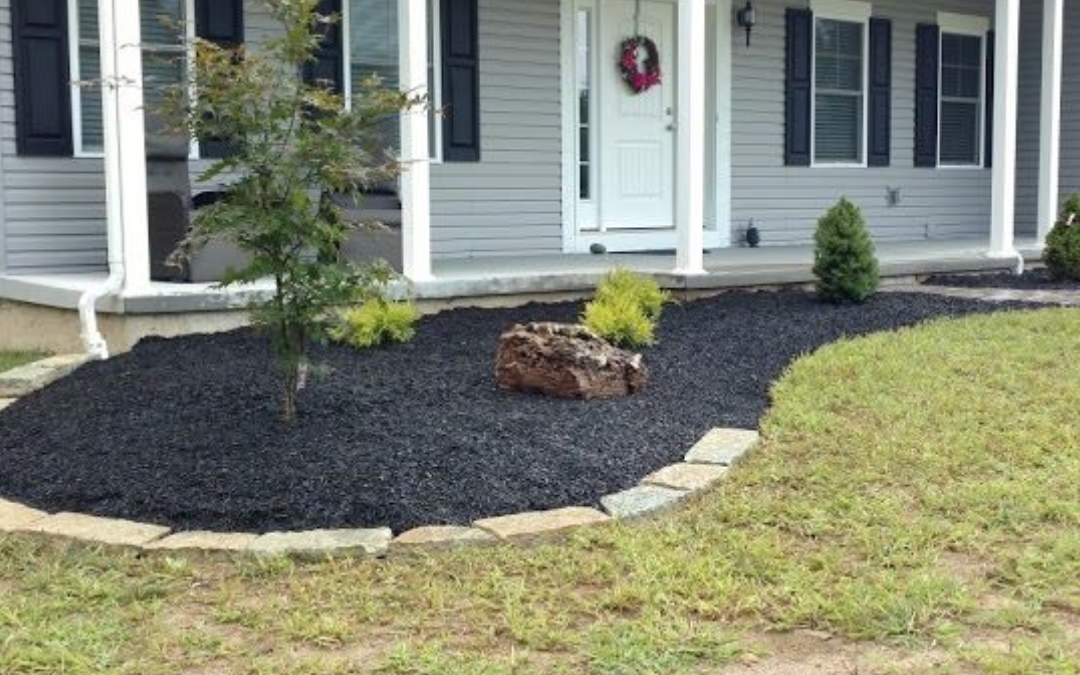Spring is here, and as the snow melts away, many Cincinnati and Northern Kentucky homeowners are left staring at lawns that look less like lush green carpets and more like dull, patchy messes. If your lawn isn’t bouncing back with the same energy as the rest of your landscape, don’t worry — you’re not alone.
After a long winter, most lawns need a little TLC to recover. Whether it’s bare spots, compacted soil, or faded color, early-season care can make all the difference in bringing your lawn back to life. At Straight Line Landscaping, we’ve helped hundreds of local homeowners revive their turf and maintain it through every season.
If you’re ready to turn things around, here’s your step-by-step spring lawn revival plan.
Table of Contents
Step 1: Clear the Slate with a Lawn Cleanup
Before you start planting, watering, or mowing, it’s important to clean up what winter left behind. Dead leaves, fallen branches, and matted grass can smother new growth and create ideal conditions for disease.
Start with:
- Raking out dead grass and leaves
- Picking up sticks and debris from winter storms
- Gently fluffing matted areas with a leaf rake
This simple cleanup gives your lawn room to breathe and sunlight to reach the soil — two key ingredients for healthy growth.
Step 2: Test and Treat Your Soil
You can’t grow a great lawn without healthy soil. After winter, your soil may be compacted, acidic, or lacking nutrients.
To get it back on track:
- Test your soil’s pH and nutrient levels (a local garden center or extension office can help)
- Apply lime if the soil is too acidic, or sulfur if it’s too alkaline
- Add organic matter or compost to improve structure
If you’re not sure where to start, Straight Line Landscaping can test your soil and recommend a treatment plan tailored to your lawn’s needs.
Step 3: Aerate to Break Up Compacted Soil
One of the best ways to encourage deep, healthy roots is by aerating your lawn. Winter foot traffic and snow compaction can seal off the soil, making it hard for air, water, and nutrients to reach the roots.
We recommend:
- Core aeration in early spring, especially in high-traffic areas
- Combining aeration with overseeding for best results
- Avoiding aeration if the soil is too wet or muddy
Need help with equipment or don’t have time to DIY? Our spring aeration service can handle it for you.
Step 4: Repair Bare Spots and Thin Areas
After the cleanup and aeration, it’s time to fill in the gaps. Spring is the perfect season for overseeding and spot-seeding areas where grass has died off.
How to do it right:
- Rake and loosen the soil in problem areas
- Apply a high-quality grass seed suited for the Cincinnati region (like Kentucky bluegrass or tall fescue)
- Lightly cover with topsoil or straw
- Keep the area consistently moist for 2–3 weeks
Whether you’re tackling small patches or reseeding large sections, this step gives your lawn the density it needs to crowd out future weeds.
Step 5: Establish Strong Watering Habits
You don’t need to water every day — just the right way. One of the most common mistakes homeowners make is either overwatering or underwatering in the spring.
For healthy turf:
- Water deeply and infrequently — about 1 to 1.5 inches per week (including rainfall)
- Aim to water early in the morning, between 6–10 AM
- Avoid watering at night to reduce the risk of fungal diseases
- Use a rain gauge or empty tuna can to measure how much water your lawn is getting
If watering sounds like a daily chore you’d rather skip, ask us about setting up an irrigation system for effortless, efficient care.
Step 6: Mow High and Mow Often (But Not Too Early)
When your lawn starts growing again, it’s tempting to cut it low for a “fresh start,” but scalping your lawn can damage new growth and invite weeds.
Our spring mowing advice:
- Wait until your grass reaches 3–4 inches before the first cut
- Keep your mower blades sharp for clean cuts
- Never remove more than one-third of the grass blade height at a time
- Leave grass clippings on the lawn to return nutrients
A regular mowing schedule is essential for a healthy lawn, and our weekly lawn mowing service ensures your turf stays at its best — without adding to your to-do list.
Step 7: Feed Your Lawn with the Right Fertilizer
Spring is when your lawn wakes up hungry. A slow-release, nitrogen-rich fertilizer helps fuel green growth and build strong roots.
Tips for fertilizing:
- Apply fertilizer after your first or second mow
- Avoid fertilizing too early — wait until soil temperatures are consistently above 55°F
- Use a balanced spring fertilizer with a mix of nitrogen, phosphorus, and potassium
- Water the lawn lightly after applying to help it absorb
Straight Line Landscaping can help you choose the right fertilizer and handle the application, so you don’t have to guess.
Want Help Reviving Your Lawn This Spring
We get it — lawn care takes time, energy, and a bit of know-how. If you’re ready for a healthy, green lawn but don’t have the time to do it yourself, our expert team at Straight Line Landscaping is here to help.
Our early-season lawn care packages include:
- Spring cleanup
- Lawn aeration and overseeding
- Fertilization and weed control
- Weekly mowing and trimming
- Watering strategy and system recommendations
Call 513-702-1543 today or visit our Facebook page to schedule your spring lawn consultation. Let’s bring your lawn back to life — and keep it looking its best all season long.

